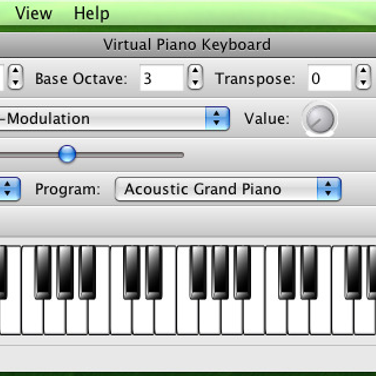The first real Hammond organ for Mac/PC. Hammond B-3X is the next-level organ virtual instrument that delivers an unprecedented new degree of realism and detail to give musicians full immersion into the electro-mechanical Hammond organ experience with all its soul, passion and vibe. Created in close collaboration with both the Hammond Organ Company, of Chicago, Illinois, and Suzuki Musical. Virtual MIDI on Mac. The OSX operating system provides virtual MIDI ports natively and can be enabled by following the steps below. Launch the 'Audio MIDI Setup' application which you can find in the Applications Utilities directory. Open the MIDI Studio Window. Double click the IAC Driver icon and enable the driver by checking the option. In the Audio MIDI Setup app on your Mac, choose Window Show MIDI Studio. In the MIDI Studio window, click the Choose MIDI Configuration pop-up menu (it may show Default), then choose New Configuration. Enter a name for the new configuration, then click OK. To add a new external MIDI device, click the Add button in the MIDI Studio toolbar. You can use the computers keyboard to play MIDI notes, and also the mouse. You can use the Virtual MIDI Piano Keyboard to display the played MIDI notes from another instrument or MIDI file player. To do so, connect the other MIDI port to the input port of VMPK. Represents MIDI velocity as highlight color tint. New configurable tool shortcuts. If you want to have applications communicating with each other via MIDI on a Mac, here is a short explanation how to do this. As an example, if you want to use the MIDI harmonizer application to feed its output notes to your sequencer, in my case Logic, or any other stand-alone plug-in, you will have to create a virtual port where both applications can make use of in order to feed and access.



Best Midi Interface For Mac
You need some kind of 'Virtual MIDI cable' to connect two MIDI apps with each other. macOS / OS X doesn't come preconfigured with such a connection, but it is pretty easy to set one up. Just follow these steps:

Virtual Midi Controller Mac

Virtual Midi Cable
- Launch the 'Audio MIDI Setup' of macOS
- Open the 'Window' menu and click on 'Show MIDI Studio'
- Double-click on the IAC Driver icon
- Activate the 'Device is online' checkbox
- You can rename the Device Name if you like, but please only use characters that are available on an English keyboard! 'IAC Driver' is fine, '哈佬' not so much.
- Create a new port by clicking on the '+' button below 'Ports' (see the screenshot below). Again: Name the port as you like, but only use English characters (the second port name in the screenshot wouldn't show up in the feelyoursound.com software, for example).
- Restart your DAW and your feelyoursound.com software
- Set the MIDI Input of the DAW to the newly created MIDI port
- Set the MIDI Output of the feelyoursound.com software to the newly created MIDI port as well
- You're done!